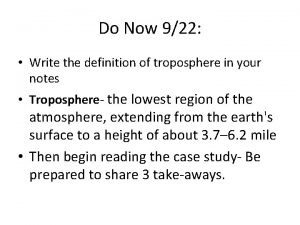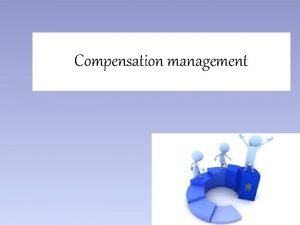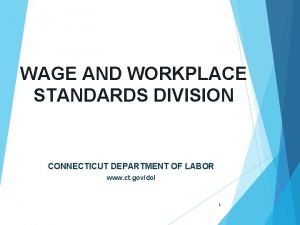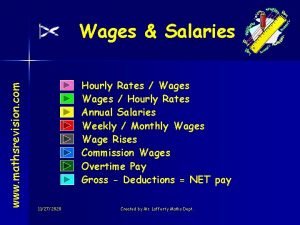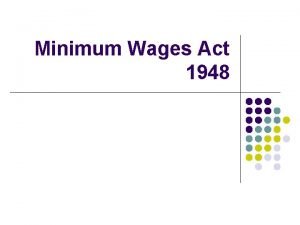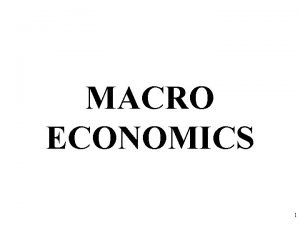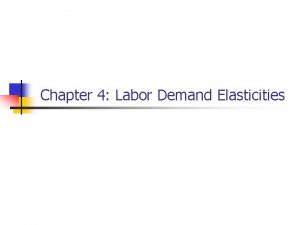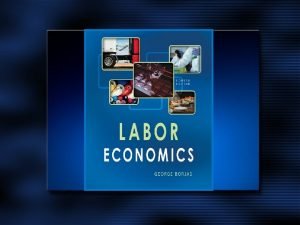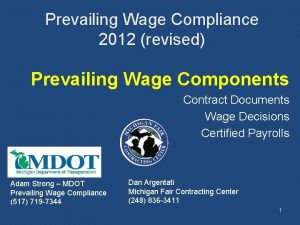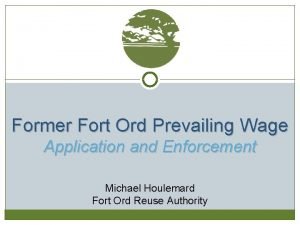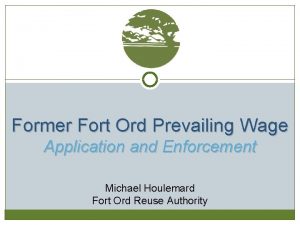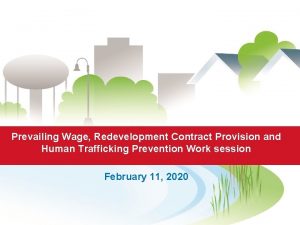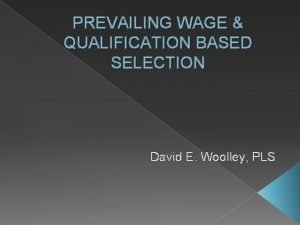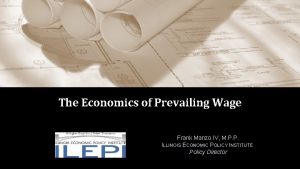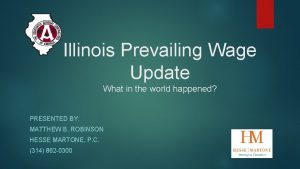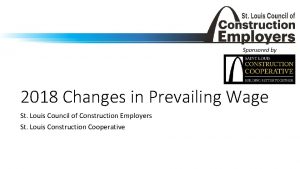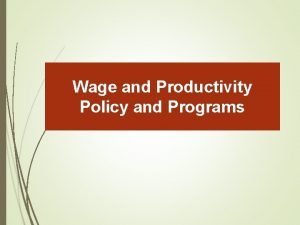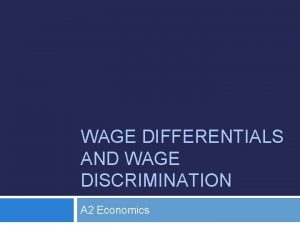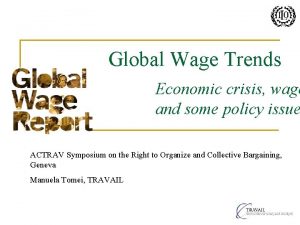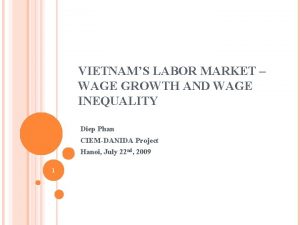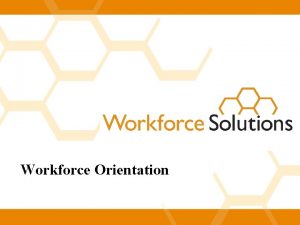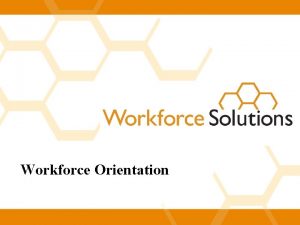The 2011 CNMI Prevailing Wage and Workforce Assessment






























- Slides: 30

The 2011 CNMI Prevailing Wage and Workforce Assessment Study (PWWAS) Occupation, Hourly Wage, and Fringe Benefits Department of Commerce Saipan April 30, 2012

The Purpose of the PWWAS �To Determine and report on the different occupation titles in the CNMI’s economy and measure the hourly wage rate for each of the identified occupations �To assess the types and levels of skills in the employed workforce to determine areas that might benefit from training and enhancement

This Report/Presentation is on the first purpose of the Study and focuses on �Occupation Titles �Hourly Wage Rates, and �Fringe Benefits

Presentation Organization 1. Occupation Titles, Hourly Wage, and Fringe Benefits according to the 2010 SOC Structure 2. Hourly Wage by geography, demographics, major Industry and Occupation 3. The Study Methodology 4. The Establishments Coverage 5. Establishments by Size 6. Total Employees Population used in the Study 7. Challenges and Limitations

Presentation Organization 1. Occupation Titles, Hourly Wage, and Fringe Benefits according to the 2010 SOC Structure 523 Detailed Occupation Titles, Wages, and Fringe v v Hourly Wage Rate Including Fringe Benefits Hourly Wage Rate Excluding Fringe Benefits The Fringe Benefits SOC Structure v v Detailed Occupation Titles Broad Occupation Titles Minor Group Titles Major Group Titles 6 th digit 4 th & 5 th digit 3 rd digit 1 st & 2 nd digits 132011 Accountant and Auditors 132010 Accountant and Auditors 132000 Financial Specialist 130000 Business and Financial Operations 132011 132010 132000 130000

Presentation Organization 1. Occupation Titles, Hourly Wage, and Fringe Benefits according to the 2010 SOC Structure Hourly Wage Rate-Including Fringe Benefits vs. Hourly Wage Rates – Excluding Fringe Benefits: CNMI-wide.

Presentation Organization 1. Histogram of the Hourly Wage with Fringe Benefits. Line indicating the Median ($6. 00) Line indicating the Mean ($9. 67)

Presentation Organization 1. Occupation Titles, Hourly Wage, and Fringe Benefits according to the 2010 SOC Structure Hourly Fringe Benefits Amount Descriptive Statistics

nd ppe ix C A d pen Ap ix D 1. Occupation, Wage Rate, and Fringe

Presentation Organization 2. Hourly Wage Rates by q q q q Island Sector Gender Age Group Citizenship Ethnic Group Industry Major Occupation Titles

Hourly Wage Rates by Island

Hourly Wage Rates by Sector

Hourly Wage Rates by Gender

Hourly Wage Rates by Age Group

Hourly Wage Rates by Citizenship

Hourly Wage Rates by Ethnic Group

Hourly Wage Rates by Industry

Hourly Wage Rates by Major Occupation

Presentation Organization 3. Methodology of the Study q q q q The Target Population Census (or Population) Approach The Study Period Data Collection Strategy Data Confidentiality and Protection The Questionnaire Data Coding, Keying, Cleaning and Processing

Presentation Organization 3. Methodology of the Study q The Target Population v q All employees in both the public and private sectors in Saipan, Tinian, and Rota Population Approach rather than a Sample Survey v Several reasons (see Report for Detail)

Presentation Organization 3. Methodology of the Study q The Study Period o September 2011 to April 2012 v September –Questionnaire Development v October to February Ø Field data collection work Ø Review, Coding, Data-Entry v February to March—Data cleaning v February to April—Data Processing and Report Writing q The Reference Period was October 2 nd – 15 th 2011

Presentation Organization 3. Methodology of the Study q Data Collection Strategy v v q Commerce CSD was responsible for the Project List of all establishment with directory information and number of employees from the Department of Finance was used a Guide to locate establishments and collect data Hired 14 enumerators and 4 data clerks and trained Detailed information may be obtained from Commerce CSD Data Confidentiality and Protection v Commerce CSD is responsible for protecting the data

Presentation Organization 3. Methodology of the Study q The Questionnaire v v q All data collected are contained in the PWWAS Questionnaire instruction and rational document given to all establishment visited is available at CSD Data Review, Coding, Keying, and Cleaning v Commerce CSD staff and temporary hires were trained completed these tasks

Presentation Organization 4. The Establishments Coverage 2, 908 total establishments

Presentation Organization 4. The Establishment Coverage

Presentation Organization 5. The Establishment Size

Presentation Organization 5. Establishment with Employees Only by Establishment Size and by Number of Employees

Presentation Organization 6. Employee Populations Used in producing Occupation and Wage Statistics for the Study

Presentation Organization 7. Challenges and Limitations q Challenges v v v q Data collection Period o Saipan Chambers of Commerce Survey o CW Application Rush o Broadband Survey o Christmas Holidays Enumerators Becoming Inactive Incomplete and/or Inaccurate Business Directory Information Limitations v v v The Total Number of Employees in the economy was not completely verified: 17, 682 (83%) was verified Statistics are based on 68% of Possible Employees Population Big difference in the number of employees reported receiving a fringe and the amount reported (see Table 14)

OO OPs. . . The End
 Mdot prevailing wage
Mdot prevailing wage The basic human aspirations are
The basic human aspirations are Polar easterlies
Polar easterlies Prevailing westerlies definition
Prevailing westerlies definition Short stories with protagonist and antagonist
Short stories with protagonist and antagonist Foot example poetry
Foot example poetry The curving of these planetary winds is the result of
The curving of these planetary winds is the result of What is this
What is this Prevailing torque definition
Prevailing torque definition Global winds
Global winds Halsey plan formula
Halsey plan formula Concept of wage and salary administration
Concept of wage and salary administration Wage and salary administration
Wage and salary administration Wage and workplace standards ct
Wage and workplace standards ct Mathsrevision.com
Mathsrevision.com What is a wage
What is a wage What is time rate wage system
What is time rate wage system Nominal gdp formula
Nominal gdp formula Croatia minimum wage
Croatia minimum wage Minimum wage argument
Minimum wage argument The minimum wage act 1948
The minimum wage act 1948 Minimum wage in romania
Minimum wage in romania Calculate real gdp
Calculate real gdp The minimum wage act 1948
The minimum wage act 1948 Whats an introductory paragraph
Whats an introductory paragraph Muster roll register
Muster roll register Wage fund theory
Wage fund theory Own wage elasticity
Own wage elasticity Reservation wage
Reservation wage Mincer wage equation
Mincer wage equation Mnu wage scale
Mnu wage scale



